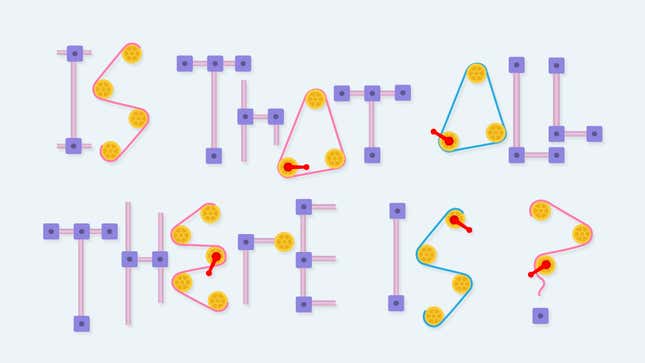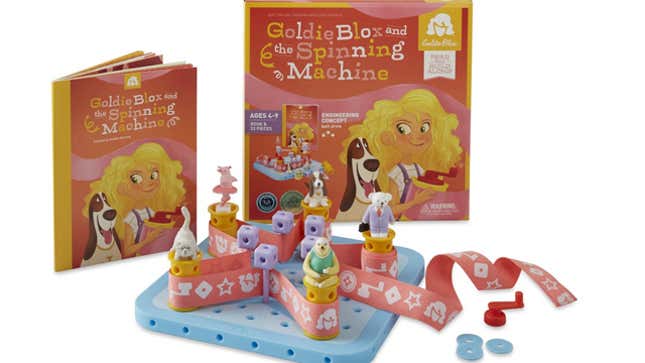GoldieBlox Means Well But Doesn't Live Up to the Hype
Latest

GoldieBlox has inspired much enthusiasm among adults. The concept—disrupt the pink aisle! provide girls with an alternative to princess-mania!—is the stuff TED talks and viral videos are made of. But are the toys actually any good? Those videos aren’t just a P.S.A. campaign—they’re advertisements. And there, the jury’s still out.
The company’s Super Bowl commercial conjured up a cross between Erector sets, soapbox-derby races and model rockets—but girl-friendly! It’s a charming vision, but the reality is a little more limited. The company’s first project, GoldieBlox and the Spinning Machine, is a relatively simple kit meant to teach the concept of the belt drive, which a kid is meant to assemble from a series of pegs, a ribbon, and a crank handle. A single set isn’t going to get a kid that far, and it seems likely to skew to the younger end of the recommended 5-to-9 age range.

The feedback on Amazon’s product page for Goldie Blox and the Spinning Machine is mixed. The majority of the 435 reviews are positive but many are negative, complaining of low-quality components and interest quickly lost. What’s more, several positive reviews admit the same faults. Though maybe some of the purchasers were just a bit… confused:

Amazon reviews aren’t a perfect measurement, of course—the dissatisfied are much more likely to complain—but it jibes with other reviews, as well. For instance, a reviewer from PC Mag had his daughter play with the original ribbon game, and he expresses concerns about replayability, the cost in comparison to other building toys and whether it’s actually able to teach engineering concepts:
For $29.99, for instance, you can get the Lego Creative Bucket, with 600 free-form pieces that can make thousands of projects. If your girl won’t buy anything not obviously girly, the 191-piece Lego Friends Olivia’s Tree House costs only $20 and is a good starter building set.
Admittedly, Lego doesn’t teach “engineering concepts,” but I’m not sure GoldieBlox does, either. The simple belt drive in the GoldieBlox machine is a far cry from the complicated Rube Goldberg machines that the kids in the company’s viral advertising video are making. GoldieBlox has expansion kits, but they’re more of the same basic pieces.
Financial therapist Amanda Clayman concurs, in a Tumblr piece titled “I hate to be the feminist grinch here.” She reports that her own six-year-old didn’t bite:
-

-

-

-

-

-

-

-

-

-

-

-

-

-

-

-

-

-

-

-

-

-

-

-

-

-

-

-

-

-

-

-

-

-

-

-

-

-

-

-








































